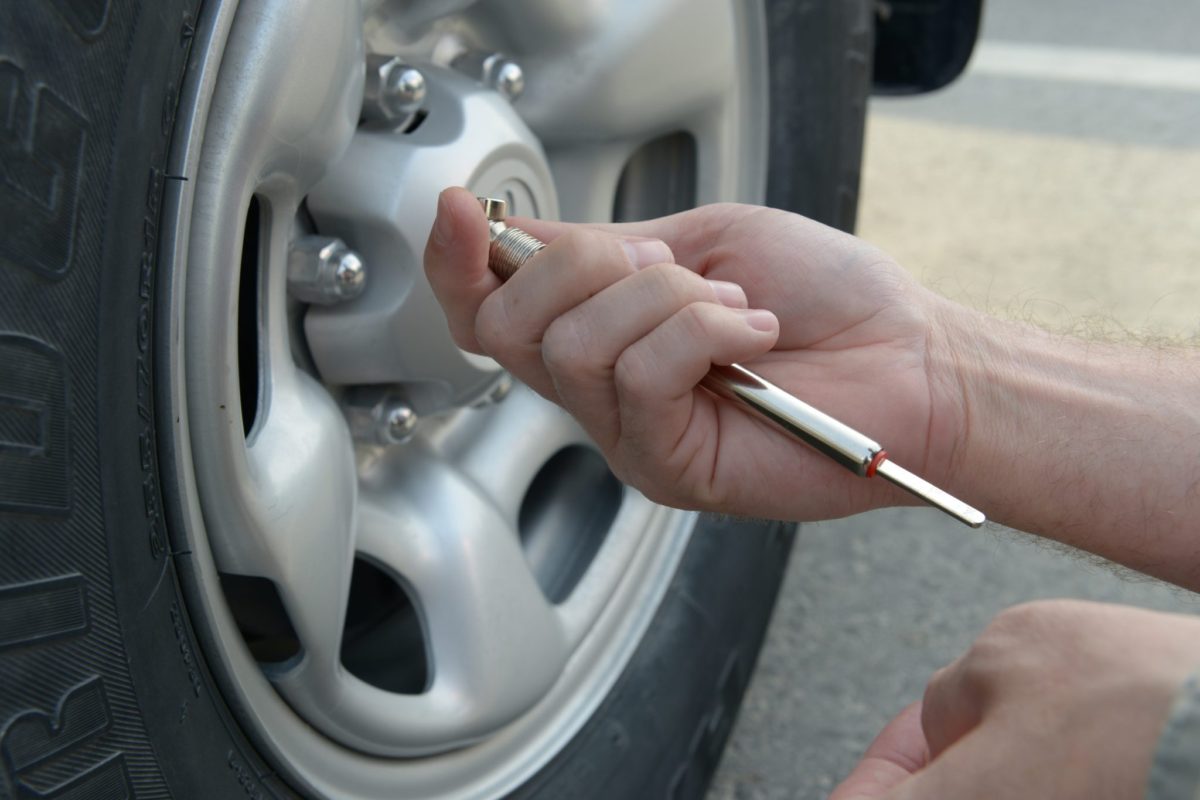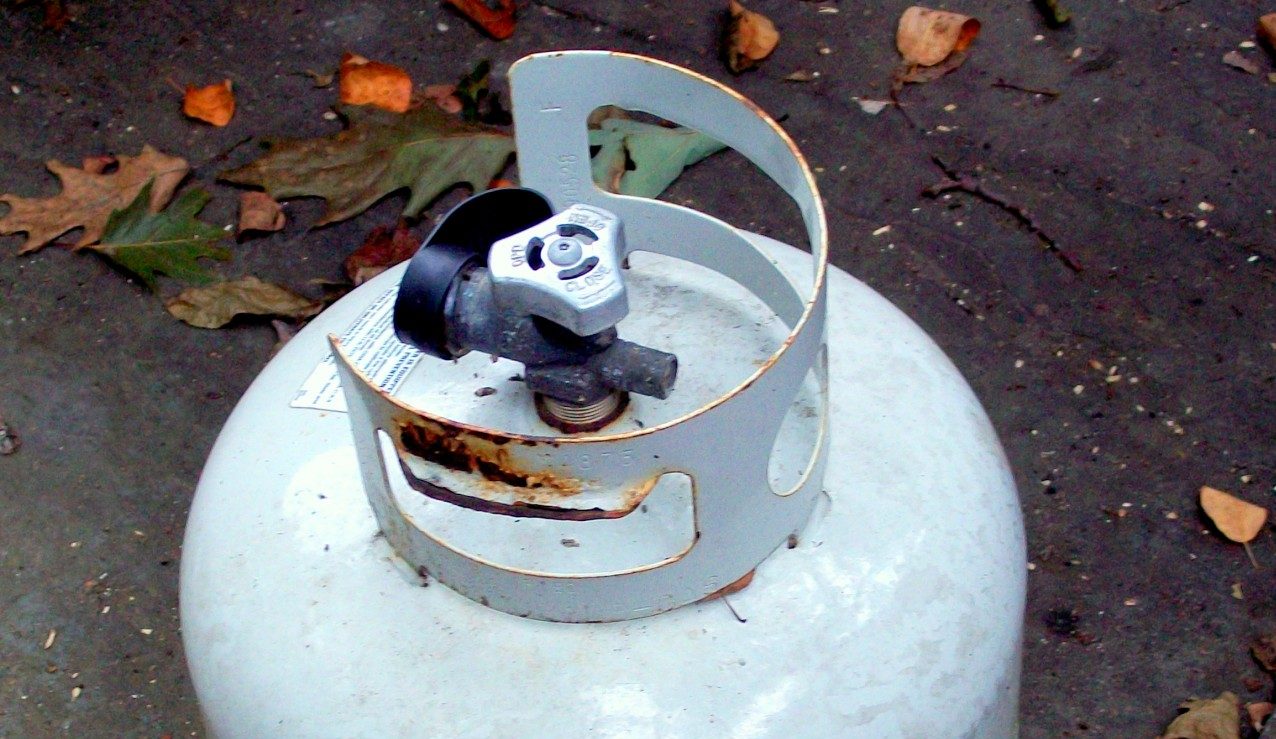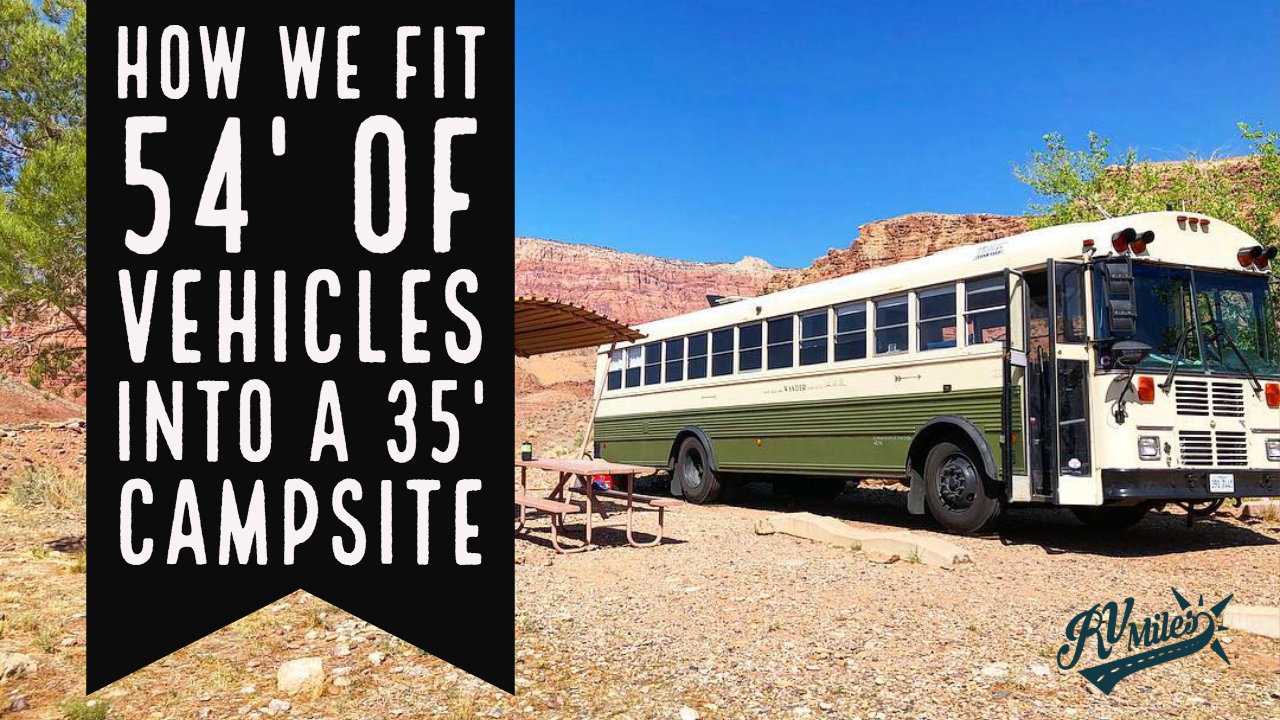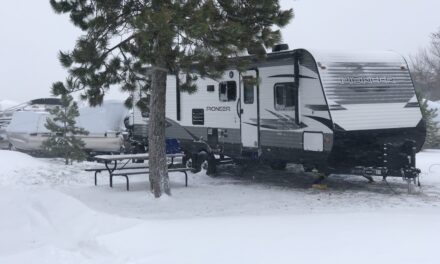My travel trailer has a sticker inside the door stating I should set the tire pressure of 58 psi, but my tires say 80 psi…which do I listen to?
– Gene W., Arkansas
Since tires blow on RVs all the time — and can cause quite a bit of damage to fragile undercarriage when they do — this is a hotly debated topic. Thankfully, the answer is simple (except when it’s not).
You go by the sticker in your RV (or motorhome, car, or truck). The pressure listed on the sidewall of the tire is the “max cold pressure,” not a recommendation for inflation. It’s the most air pressure that should ever be in that tire. That should definitely be the advice you follow for a motorized vehicle. That said, trailer tire manufacturers like Goodyear are now recommending that you run the max pressure listed on the sidewall of the tire.
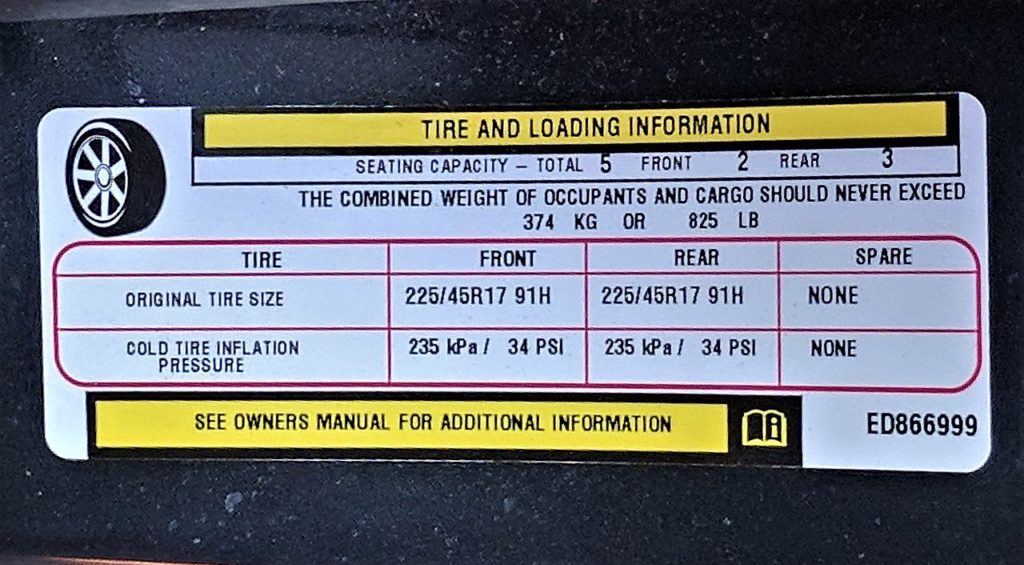
A tire and loading sticker showing the vehicle’s original tires and their recommended PSI.
Tire pressure is all about the shape at which your tire meets the road. Too little pressure and the sidewalls flex too much and overheat — the number one cause of blow-outs. Too much pressure and your traction decreases, along with your stopping distance, and your ride gets stiffer. Both scenarios cause uneven wear.
To little pressure is always worse than too much (but still below the tire’s max).
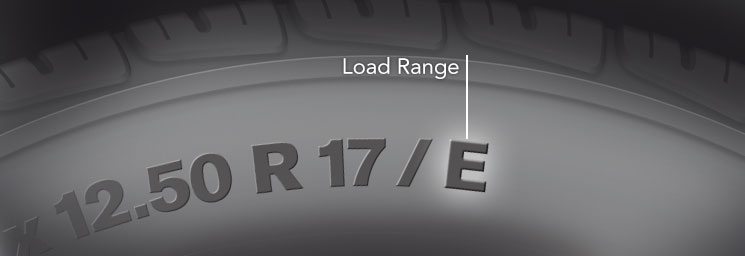
Illustration courtesy of Discount Tire
Tires, no matter the brand, adhere to a load rating chart — a letter code that tells the purchaser or installer how much weight a tire can carry. Your trailer or motorhome is supposed to have a tire with a specific load rating. The RV’s manufacturer looks at the weight of your RV and specs a tire in that load range, then takes an inflation table that shows what the tire pressure should be for that tire at that load. That’s what they put on the sticker.
So you should usually go by what any vehicle’s sticker says — unless you have put on a different size or load range tire, OR you want to optimize your tire pressure. In either of those scenarios, you need to look up the inflation tables for your tires yourself, they’re all available on the internet. You can also call the tire manufacturer, and they’ll be happy to guide you to the right inflation point.
Ideally, you will go weigh your rig. You can go to any CAT scale (usually at truck stops) and get your individual axle weights. You just pull up onto the scale, press the intercom button and tell them you are a private vehicle, go inside and pay. They’ll hand you a printout that shows the weights of your different axles. They even have a convenient app that lets you avoid the whole intercom thing if you wish.
Take an axle weight, and divide it by the number of tires on that axle. Your trailer will be listed as a single axle, even if it’s two or three together, so if you have a triple axle trailer, divide the axle weight by six tires. Add 10%, and look up the proper pressure on the inflation table.
You should check your tire pressure before every long journey. Carrying an air compressor to top off your tires at the campground is essential.
Let me also take a moment here to mention that it is very likely that you will need to put new tires on your RV well before the tread wears out. The second leading cause of blowouts is tire age. Rubber weakens as it gets older, and no amount of checking tread depth or looking for cracks will stop it. We recommend replacing your motorhome’s tires every six years, and your trailer’s every four years.
Tire pressure isn’t an exact science. If you’re a little over your optimum pressure that’s ok. It’s better than being under. But make sure to be below the max rating of the tire. For more information on load ratings, check out this article from tirerack.com.

